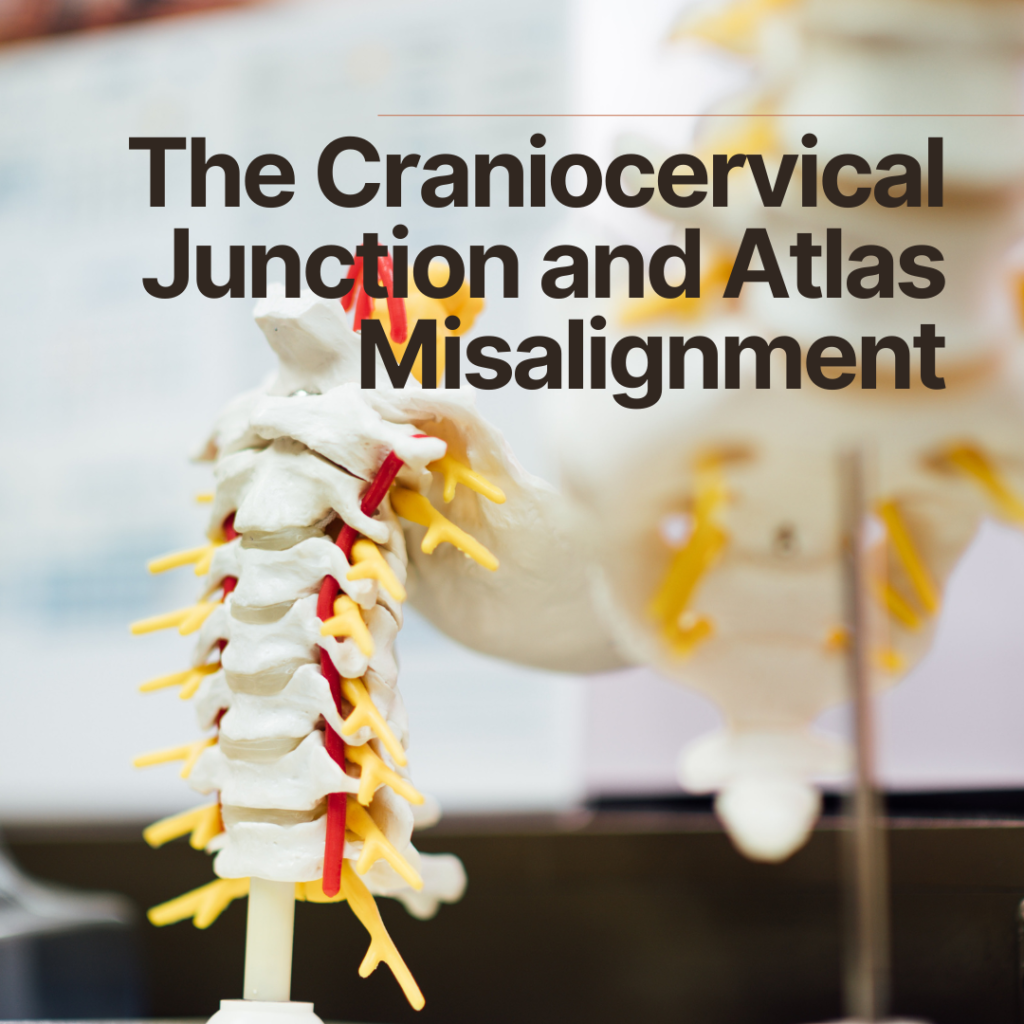What’s the Craniocervical Junction (CCJ)?
The craniocervical junction (CCJ) is the area where the skull and the neck (cervical spine) meet. It is a complex area that is made up of several bones, joints, and muscles, and it plays a critical role in supporting the head and allowing for movement. The CCJ is made up of the atlas (C1) and axis (C2) vertebrae, which are the top two bones in the neck. These bones are connected to the skull at the occipital bone, which is the bone at the back of the head. The CCJ also includes the ligaments, muscles, and other tissues that help hold the bones together and allow for movement.
What are the complications of the atlas misalignment?
The atlas (C1) misalignment can cause a variety of symptoms, including neck pain, headaches, dizziness, and difficulty with balance and coordination. While anyone can be affected by atlas misalignment, it is more common in certain groups, including:
-
Athletes and manual laborers: People who engage in physical activities that involve repetitive neck movements, such as basketball players, gymnasts, and construction workers, are at an increased risk of atlas misalignment.
-
People with a history of injury: Individuals who have sustained a neck injury, such as a car accident, fall, or sports injury, are at higher risk of atlas misalignment.
-
Older adults: As we age, the bones, joints, and ligaments in our neck may begin to degenerate, increasing the risk of atlas misalignment.
-
People with poor posture: Individuals who have poor posture or who spend long periods of time in a sedentary position, such as working at a desk or looking at a computer screen, may be more likely to experience atlas misalignment.
It’s important to note that not everyone with atlas misalignment will experience symptoms, and the presence of symptoms does not always indicate atlas misalignment. If you’re experiencing symptoms, it’s a good idea to talk to your upper cervical chiropractor to determine the cause and the best course of treatment.
What can you do to prevent the atlas misalignment?
Here are some steps you can take to help prevent atlas misalignment:
-
Practice good posture: Maintaining good posture, especially when sitting at a desk or using a computer, can help reduce the risk of atlas misalignment. Make sure you sit up straight, keep your shoulders back, and avoid hunching forward.
-
Exercise regularly: Regular exercise can help improve your posture, strengthen the muscles in your neck and upper back, and reduce the risk of atlas misalignment. Incorporating neck and shoulder stretches into your routine can also help.
-
Avoid activities that put a lot of stress on your neck: If you engage in physical activities that involve repetitive neck movements, such as playing sports, try to vary your activities and take frequent breaks to avoid overuse injury.
-
Manage stress: Stress can cause tension in the muscles and tissues of the neck, which can increase the risk of atlas misalignment. Consider engaging in stress-reducing activities, such as yoga, meditation, or deep breathing exercises.
-
Use proper sleep habits: Sleeping in a position that puts your neck in a stressed position can increase the risk of atlas misalignment. Try to sleep on your back or side with a pillow that provides proper support for your neck.
If you have a history of neck injury or if you’re experiencing symptoms of atlas misalignment, it’s a good idea to talk to your NUCCA chiropractor or an upper cervical chiropractor for a proper evaluation and recommendations for treatment.





